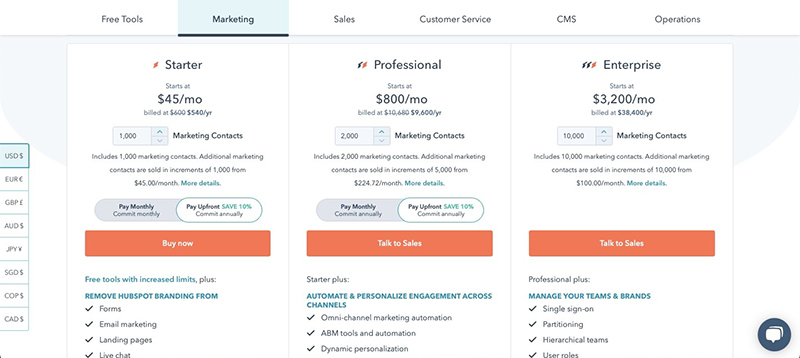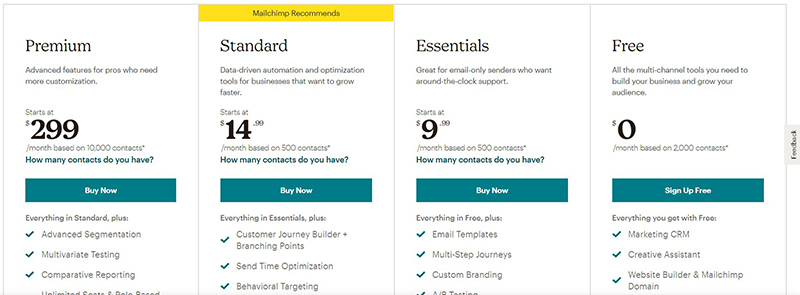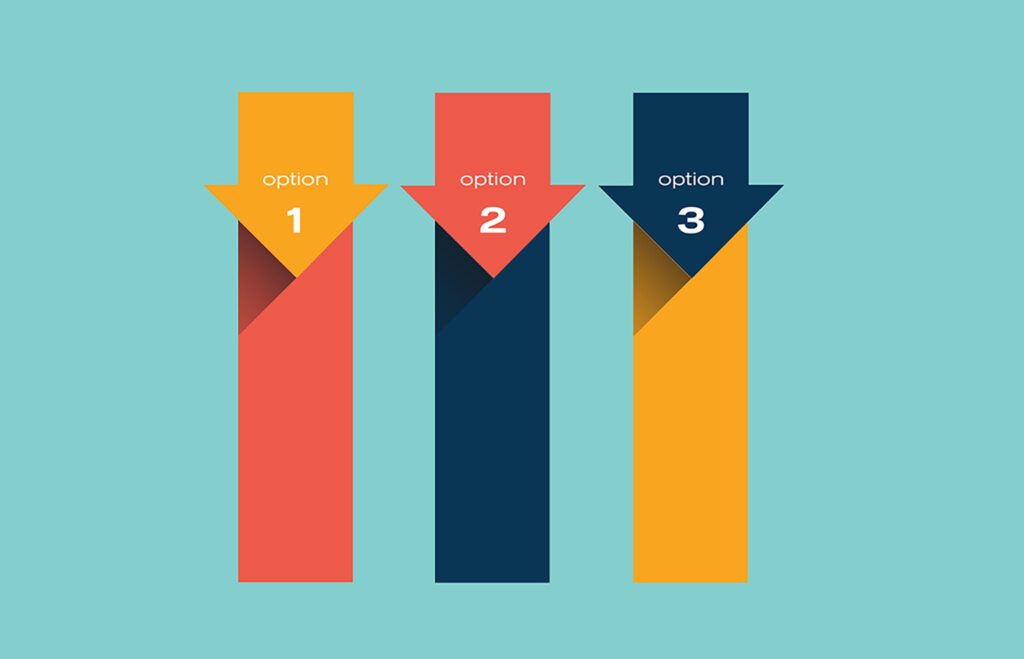You’re searching for a specific new SaaS product for your business. As you browse the various competitors in that space, you come across an option that seems viable. You like the product. The features look just right. And the business seems customer-oriented—a huge selling point.
But there’s a problem.
As you scroll through the various tiers on the business’s pricing page, you just don’t see yourself in any of the offerings currently available—you need more features than one tier provides, but not as many as the next.
The best SaaS products in the world will still get passed over if potential buyers can’t find a plan that addresses their needs without forcing them to pay for a whole lot of extras they don’t even need.
An effective SaaS pricing structure caters to a wide range of target customers—sometimes from the journeyman user all the way up to the enterprise-level client, depending on the product.
But how do you ensure your offerings speak to all those customers in a way that makes sense and encourages them toward making a purchase?
What are the pitfalls of tiered SaaS pricing?
Cost-based and competitor-based pricing are two of the more common pricing strategies in the SaaS world.
- The cost-plus pricing method involves using your development and cost of acquisition expenses as a benchmark to establish your price. For example, you might price your product to produce a ten percent profit over the course of the first year.
- The competitive pricing strategy involves setting your subscription tiers as a response to what your competitors are doing. You might charge less than a competing brand in an attempt to siphon business from them, similar to stay competitive, or more because you think customers will be willing to spend extra on the superior features of your product. In any case, you’re making decisions in response to what someone else has already done.
While these strategies may be a good starting point, they lack the nuance of a more effective pricing strategy.
Cost-plus pricing, for example, may leave you inflexible. And while market research is certainly important, competitive pricing, on the other hand, leaves you overly subject to external influence. These tactics also overlook factors such as the real value of your product to the customer, as well as the level of value they perceive it to have.
Naturally, production costs and competitor behavior should have their place in how you price your own catalog of offerings—they just shouldn’t serve as the beginning and end of your considerations.
The best pricing strategy serves as a logical bridge between what you offer in terms of value and who’ll want to buy it. Your packages need to make sense to the customer.
Subscription tiers tell a story
The average SaaS business offers around 3 to 4 pricing tiers. This range makes it easy for customers to have an adequate understanding of what their options are while still ensuring a significant number of potential user needs are being covered.
Go much higher and your pricing becomes convoluted. Go much lower and some potential customers may not see themselves represented in your packages.
Hubspot does a great job of laying out its features.
Visit its marketing hub pricing page and you’ll immediately be presented with three neat little columns, each with a name describing the type of customer the tier caters to based on business size.

Immediately below each name, the features are laid out in clear bullet points.
This simple, descriptive layout makes it very easy for potential customers to weigh each package against their own needs. An effective pricing strategy allows the customer to quickly spot themselves on the page.
They can also customize the packages based on their unique contact requirements to get an accurate idea of what they’ll be paying. This gets customers as close as possible to getting exactly what they need and not paying for unnecessary extras and upgrades.
Providing the right value
Dividing your customer base into several segments or tiers is one thing. Filling those different tiers with the right features is wholly another.
While assigning each tier the best features and functionality to support the needs of its target audience is tricky, it’s also what sets a great pricing strategy apart from an average one.
How this is done will depend at least in part on the product.
For example—similar to HubSpot—email marketing platform MailChimp employs a form of value-based pricing by dividing its tiers into categories based on contact volume and added features.

Each package comes with features unique to the needs of customers based on the size of their business, offering the highest perceived value. Not every business can establish pricing strategies with such clarity. However, you can still imitate MailChimp’s objectivity by crafting tiers with true logic and value.
If a package is labeled “Beginner” or “Essentials” it should be because the features actually serve the needs of a startup. While this may sound obvious, the actions it requires may not be.
To truly price correctly, consider taking a detailed look at your demographics.
- What do startups who might need your product actually look like? And what about mid-level and enterprise prospects?
- What features can you give them that will help them reach their goals—and hopefully eventually upgrade to the next tier?
If your competitor’s comparable tiers are more customer-oriented or feature-rich than your own, the discerning customer will probably select them regardless of small differences in price.
As Warren Buffet puts it, “Price is what you pay, value is what you get.”
Stirring in nuance
While what you offer is certainly the most important part of any pricing strategy, how you offer it plays a role in its appeal to customers, too.
For example, your pricing page may call out one plan tier as a customer favorite. In theory, this could serve to better highlight the option you feel will appeal to your ideal customer profile.
But it could also be used to strategically call attention to a higher-priced plan that makes the alternatives look more appealing in comparison.
The SaaS business Bitsketch begins its pricing page by putting its highest tier first, then recommending a more moderately-priced option—perhaps capitalizing on research that indicates customers are more eager to purchase something affordable after being presented with something outside their price range.
Be mindful of how you arrange your options on the screen, too.
- Research indicates web users spend 80% of their online browsing time looking at the left side of the screen, making it prime real estate for conveying your message.
- And keep in mind 95% of purchasing decisions are subconscious.
The little choices you make when presenting your product to a customer can have a significant influence on what they decide to do.
Perfecting your SaaS pricing strategy is an art form
Pricing your SaaS product isn’t something you can perfect in a day. Rather, a good pricing strategy hinges on your ability to respond to factors that might influence your key demographic’s purchasing decisions.
Zoom’s revenue more than doubled during the height of the pandemic as it became the most popular video conferencing software on the planet. Of course, it was a very special set of circumstances that led to the word “zoom” becoming a verb, but several early pandemic pricing and packaging decisions contributed to the Zoom phenomenon.
At the height of COVID-related lockdowns, the company simultaneously pivoted to a B2B model, focusing on corporate-friendly features in the form of features like conference rooms, and security provisions, while still catering to its previous B2C customers.
While enhancing its B2B feature suite, Zoom also released free conferencing for schools, ensuring the product would be as ubiquitous as it is.
A little less than 20% of its revenue came from buyers spending $100,000 or more, but by adopting pricing models that worked for as many consumers as possible, Zoom helped cement itself as the de facto video conferencing software of the pandemic.
A good pricing model makes it easy for consumers to choose your product over the competition. By being strategic in how you optimize your pricing tiers, you broaden your product’s appeal while also providing the customer with more value.







